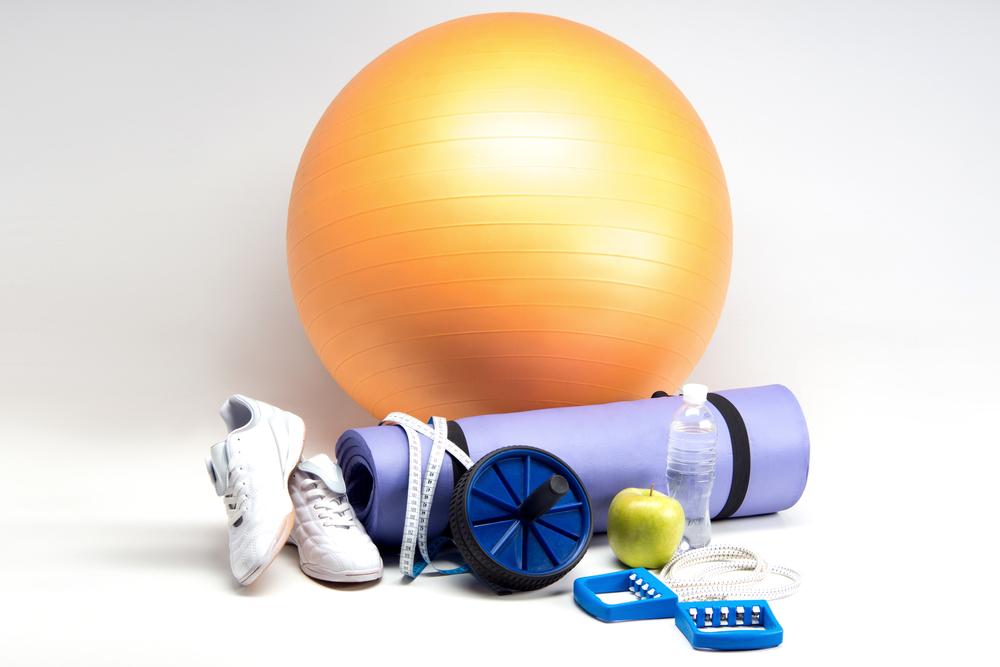How to start working out and don’t give up - 5 easy steps
Starting regular physical activity can be one of the best decisions you’ll ever make

Medical Fact Checked by: Dr. Bryan Havoc
The decision has been made - you want to work out. But how to organize yourself and how to plan trainings to keep the will for working out and at the same time make progress?
It’s simple. Specialists from Mayo Clinic have ready tips for that. Starting regular physical activity can be one of the best decisions you’ll ever make in your life. Activity will help you lose weight, prevent a lot of diseases, cheer you up and improve your self-confidence.
That’s why it’s worth to follow advice of specialists, who know what to do to make physical activity a permanent part of your life. Here are 5 valuable tips which will be suitable in every case - when you’re starting and when you’re coming back to active lifestyle after a break.
1. Check your physical shape
For sure you have general knowledge about your physical shape, muscle strenght, or quite the opposite. But checking and recording results of various fitness tests is a good starting point. You will realize how your physical condition really looks like and you’ll be able to check your progress, comparing tests results once in a while.
Test:
- Your pulse rate before and after you walk 1 mile (1.6 kilometers)
- How long it takes to walk 1 mile (1.6 kilometers)
- How many push-ups you can do at a time
- How far can you reach forward while seated on the floor with your legs in front of you
- Measure your waist circumference around your bare abdomen just above your hipbone
- Count your BMI and WHR - using internet calculators
2. Design your fitness program
Planning to work out, for example 4 times a week, is often not enough. You need more precise guides. While planning your training consider following tips:
- Think what is your main goal. Do you want to lose weight? Or maybe you’re dreaming about running in a marathon? Choose such kind of activity that corresponds
with your goal.
- Create a balanced fitness program. Most adults should aim for at least 150 minutes of activity with medium intensity every week or 75 minutes with high intensity. It's also worth to have at least 2 days of strength training a week.
- Exercise with your own pace. Beginners should start with a low pace and progress slowly. If you suffer from any injury or a medical condition, if you’re overweight, if you smoke and you're 40 or more, before start working out you should consult your doctor.
- Schedule time for workout. Treat training as an important business appointment – write it down in your calendar and don't reschedule it for another hour or day without an important reason.
- Use different types of activity. Don't stick to marching or running. Ride a bike one day, another day go to a swimming pool and other day go marching or running. Thanks to that you won't get bored.
- Plan recovery time. Don't work out too long or too intensely because as a result you'll get exhausted and lose motivation for next trainings. Between strength trainings plan no less than 24-48 hours of break. You can do aerobic training every day or every second day. At least one day a week use for rest and recovery.
- Put all your plan on paper. It's good motivation to fulfil it day after day, week after week.
3. Prepare your equipment
At the beginning you'll only need a pair of good athletic shoes. If you want to buy exercise equipment to make your training more interesting, look for something practical and easy to use. For beginners often dumbbells, fitness ball, mat and elastic tapes are enough.
4. A good start
Now you're ready for action. As you start working out, remember about this tips:
- Warm up before training and after that take some time for a slow walk and stretching, which will let your heart rate slow down.
- During fitness training (but after warming up), speed up to a pace you’re able to continue for 5 to 10 minutes. It's enough for the beginning. Later gradually extend time for exercising. Your goal is 30-60 minutes of exertion for most days of the week.
- If you won't find 30 minutes for training try to exercise 2 or 3 times but for 10-15 minutes every time. It also works.
- Use opportunities to diversify physical activity. Don't limit to sports you chose. Take your family for a walk in the woods or in the mountains, go dancing. Every kind of physical activity counts.
- Listen to your body. If you feel bad during exercises (nausea, dizziness, shortness of breathing, pain) take a break and rest. If the problem persist - visit your doctor.
- Be flexible. If you feel bad, take a break for 1-2 days.
5. Monitor your progress
Verify first results of training 6 weeks after starting your activity – do the same tests as you did before starting fitness program and then again repeat them every 3-6 months.
Nothing else motivates more than improving physical shape, muscles strength, elastic body and weight loss.
When you'll start to lose motivation, modify your fitness plan. Try to find a partner for training. Writing a fitness diary is also a good idea. Note what you've already accomplished and how you felt after exertion. When you'll be in worse mental form read your notes. It will help you brace you up and go for training.
*This article is for informational purposes only and does not constitute medical advice. The information contained herein is not a substitute for and should never be relied upon for professional medical advice. Always talk to your doctor about the risks and benefits of any treatment.

